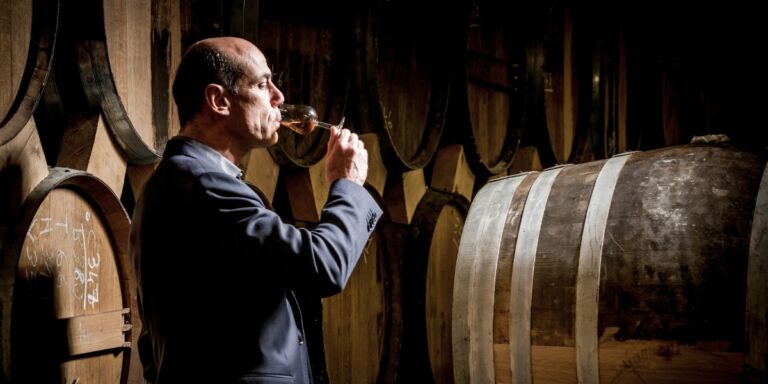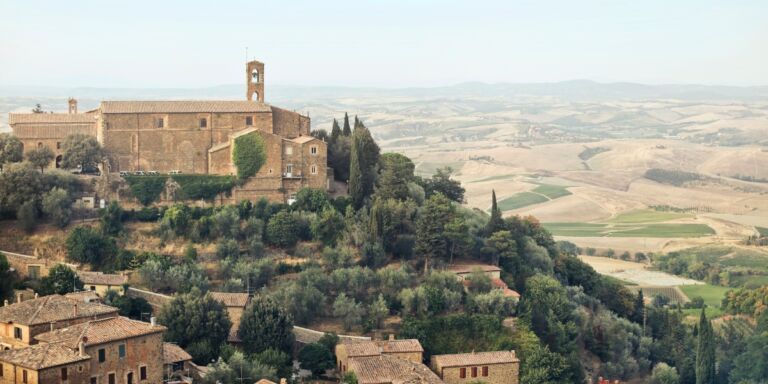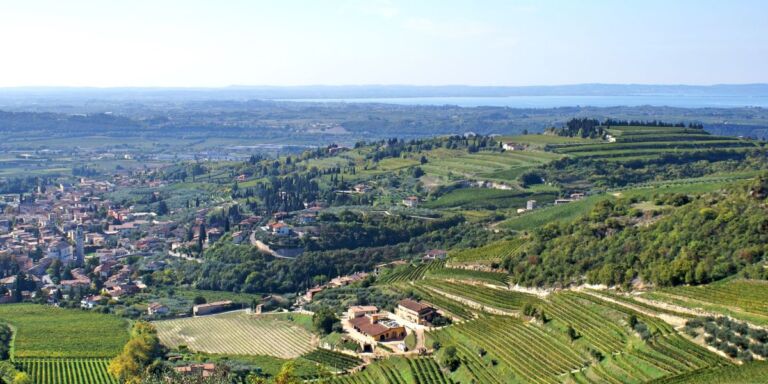They’re going appellation mad in Sonoma. The AVAs here have always been difficult to grasp, of course; it’s a vast wine region with myriad soils and aspects and climatic variations. Its neighbour Napa, 30 miles long and a few wide, with a Médoc-like simplicity of appellation, is a doddle by comparison.
The south of Sonoma is a positive mosaic, with Moon Mountain and Sonoma Mountain sitting happily within the long-established Sonoma Valley AVA. It took them years to get Moon Mountain recognised (it was finally passed in 2013). Some said having a mountain appellation as part of a valley would just confuse consumers; those who had vineyards at 2,000ft, resenting having to put ‘valley’ on their labels, welcomed the addition.
That was a decade ago and similar arguments are now being played out across the region, with petitions for two new Sonoma AVAs – Sebastopol Hills and Freestone-Occidental – in the works.

West Sonoma Coast AVA
As vineyards mature and growers get to know their land better, they naturally claim uniqueness for their region. The coastal producers had long complained of the vast reach of Sonoma Coast AVA. To lump land a couple of miles from the Pacific with vineyards far inland (up to 40 miles away), with all the differences in terroir that entails, is a nonsense, they said. And so, in 2022, West Sonoma Coast AVA, the newest Sonoma appellation, was ratified.
The landscape here is bucolic: dairy farms with split-rail fences and tumbledown barns, meadows gorgeous with wildflowers, dusty roads winding through neat hamlets (there’s always a smart bakery). Cooling winds blow unobstructed from the Pacific, rainfall can be four times that of London, and there’s a considerable drop in summer night-time temperatures.
As vineyards mature and growers get to know their land better, they naturally claim uniqueness for their region
West Sonoma Coast producers are familiar to a certain type of wine lover: Hirsch, Failla, Littorai, DuMol, Paul Hobbs, Peay, Freeman and Cobb. In Pursuit of Balance, a crusade to bring restraint to California Pinot and Chardonnay, originated here. Many vineyards are long-established: Cobb Coastlands and BA Theriot (of which more later) were planted in 1989, Peay in 1998, Hirsch in the early ‘80s.
Andy Peay, who bought a sheep ranch in the mid-1990s and planted to Chardonnay and Pinot, says the weather can be ‘frankly hostile’. His Chardonnay is intense, ripe and precise with an oyster-shell texture. Yields are low – ‘we’re not interested in big and bold,’ he says.

That attitude is echoed by Eiji Akaboshi, associate winemaker at Freeman. He beams at the notion that the exceptional, velvety Yu-ki Estate Pinot Noir has the rustic edge of a Pommard or Nuits-St-George but says they are by no means in thrall to Burgundy; nor is consultant winemaker Jeff Gaffner at Black Kite, who produces Pinot Noirs of noticeable ripeness and opulence. ‘We extract pretty aggressively early on,’ he says.
Russian River Valley AVA
As you move inland it’s clear why there’s so much support for demarcating AVAs – and there’s nothing new about it. Russian River Valley is famously cool, the evening fogs rolling up the valley, bringing temperatures down considerably from their daytime highs. And within Russian River is another AVA, Green Valley, ratified in 1983. ‘We’re like a depression within a depression. The fog isn’t burning off till ten, eleven, sometimes noon, so we’re getting an extended coolness through the mornings,’ says Mari Jones of Emeritus, one of the long-established Pinot producers of the region.

Russian River Pinots are bigger, riper and warmer than their coastal cousins. ‘They’re cherry ripe with blackberry aromatics, a lush mouthfeel and pronounced fruit,; says Heidi von der Mehden, winemaker at Merry Edwards. ‘There’s a natural balance and elegance even in the bigger wines. There’s no point in chasing Burgundy,’ Rod Berglund of Joseph Swan Vineyards says. By contrast, Green Valley Pinots have more pronounced acidity and less robust tannins.
The next Sonoma AVAs?
Towards the southern end of the West Sonoma Coast AVA, the town of Occidental sits at the confluence of three appellations: West Sonoma Coast, Russian River Valley and Green Valley. On a balmy April evening, we’re standing in one of the most celebrated vineyards in these parts, BA Thieriot. Planted in 1989 to Pinot Noir and Chardonnay, its fruit goes into cuvées as coveted as Littorai’s BA Thieriot Chardonnay, Rivers-Marie and Williams Selyem.

Sebastopol Hills is a gorgeous, sheltered region of rolling horse pasture and wooded hills. Many producers here are so convinced of the distinctiveness of its soils, its fog patterns and the regular afternoon winds that they want it to be an appellation: a petition has just been filed for a Sebastopol Hills AVA. This new appellation, the petition says, is ‘entirely within the Russian River Valley AVA and partially overlaps with the Green Valley of the Russian River AVA, which also lies within the Russian River Valley AVA’.
Complicated? You bet, says Christopher Strieter. ‘But complexity is good. We should embrace it. Look at Burgundy.’ Strieter is one of the founders of Senses Wines, which owns BA Thieriot; their winemaker is the star consultant Thomas Rivers Brown. Within a 24-minute interview, Strieter mentions Burgundy eight times. Are wine lovers ready for this kind of detail in their AVAs? ‘Yes. People are fascinated by it. And as Jess Jackson used to tell me, it’s our job to educate the world about our place and the wines that are as good as many others around the world that are much better known.’
The other new AVA proposal, Freestone-Occidental, is next door and entirely within West Sonoma Coast; it’s even more convoluted, proposing as it does a revision of several existing AVA boundaries. But it’s amazing vineland that attracts winemakers such as cool-climate guru Steve Kistler, who considers the ‘uplifted marine terraces and ridges… ideal for growing distinctive and Burgundian-style Pinot Noir.’

The politics of the AVA system
It might seem like everyone is enthusiastic about more AVAs but there are dissenting voices. ‘It’s a distraction and a fracturing instead of a uniting,’ one prominent producer told me off-record. ‘The more we are fractured, the less clear our message is. And in a time where we are fighting as wineries to survive, to get people interested in spending more money on our wines, this runs counter to our goals.’
This owner did not downplay the uniqueness of their land but they strongly made the case that any AVA is ‘deeply politically drawn – we all know that and we all understand that.’
It might seem like everyone is enthusiastic about more AVAs but there are dissenting voices
Strieter diplomatically acknowledges that there is disagreement. He notes in an email that Freestone-Occidental ‘would conflict with the Russian River Valley and goes a step further to propose the removal of land from RRV and adding it to the West Sonoma Coast.’
He goes on: ‘There is much ongoing dialogue about this proposal… does Russian River Valley strongly oppose this? What is West Coast Sonoma’s stance? Do growers in the proposed realignment region agree? And many more questions.’ The TTB (the government department responsible for AVAs) will have to go into a lengthy review process, ‘especially if there’s dissent within the community.’

Another major player, Andy Smith, co-owner of DuMol (renowned for its Green Valley Pinot and Chardonnay) agrees that politics are inseparable from AVAs but that things have ‘become less political’ since (for example) 1983, when the proposed borders of Russian River Valley were tweaked to accommodate Gallo’s ‘multiple hundreds of acres…a big chunk, close to Petaluma which should never have been included’.
A Scotsman who has spent a large part of his professional life in California and who also makes a Napa wine, Smith sums up the three key components of terroir in Sonoma: geology, elevation and coastal impact. That new AVAs are being assessed according to these criteria is ‘a maturation’, he says: they’re being created ‘for the right reasons’. He approves of the 2012 AVA, Fort Ross–Seaview, which lies within Sonoma Coast, ‘because it’s a really unique geology and elevation.’ He claims no special knowledge of Sebastopol Hills but suggests it is equally valid as an AVA: ‘It’s very windy’, he says approvingly.
It seems the most natural thing in the world to want to officially mark and delineate such a distinctive place
You have to experience these pockets of land to understand their difference. Take Rockpile, for example, the smallest AVA in America, up in the north of the county. It’s delineated by elevation – the vineyards sit above the fog line at 240m and higher. The hillsides plunge dramatically down towards Lake Sonoma, there are huge variations in sun exposure and a considerable drop in night-time temperatures – ‘it’s one of the most distinctive places to grow grapes,’ says Clay Mauritson, whose family have farmed here for generations. The Zinfandel here is marked by delicate, sweet spiced cherry fruit and very fine acidity. It’s other-worldly – the very air feels rarefied under the bright sunshine and, of course, the fog never rises this high. It seems the most natural thing in the world to want to officially mark and delineate such a distinctive place.
There’s a feeling that the time is right. Here’s Anthony Beckman, winemaker at Balletto Vineyards (and one of the key personnel behind the Sebastopol Hills petition): ‘We are ready. We are grown-ups. We can see where our vineyards differ.’
Above all, an AVA allows you to say, ‘Our land is officially different’. Smith: ‘The fine wine business is a people business. When you’re out there pouring your wine, it’s good to have a story to tell; to be able to say, “This wine does not taste like that anywhere else in the world”.’








